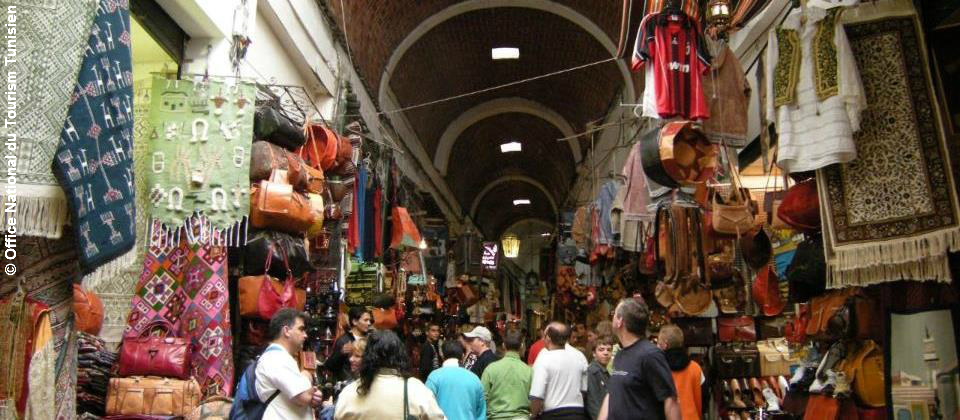Gastronomy

It is in the former families of the capital, left today the Medina to go to live in the new districts of the town and the new cities around Tunis, that we can find the old culinary specialities of Tunis. But it is also in the numerous restaurants of the souks of Tunis that we can find still some of these specialities which go from entries as Tunisian salad, the salad méchouia or briks and soup of the barley and the fish up to main dishes as diverse sorts of couscous with the mutton or with the fish such as the grouper) as well as the grills of merguez sausage, chops of lamb or fish. The meal does not end without the consummation of a dessert with seasonal fruits nor without the tasting of local pastries and a mint tea or a pine nut tea.

Handicrafts
The sector of handicrafts in Tunis finds in the context of a capital with the history and with the urban constitution so rich and so varied all the characteristics of a visible diversity and muti-functioning which allow the sector, due to this multidimensional, creative and varied aspect, an attractiveness which arouses the interest of the visitors and the tourists.
The sector employs today in Tunis a few thousands craftsmen distributed on several corporate associations among them we shall quote in particular those of the jewellery, the wrought-iron craft, the brassware, the weaving of the silk and the "hayek", the perfumes and the essential oils, the work of the leather, the preparation of the "chechia", etc.

It should be noted that as regards the "chechia", this red hat of Andalusian origin, (of Toledo according to Ambassador Alfonso of The Serna), its preparation was a noble and prosperous activity for centuries and is even practised nowadays in the souk of Tunis which bears its name, the souk Ech-Chaouachia, and which adjoins former Dar El Bey, the current Palace of the Government.
However the production of the "chechia" strongly decreased since a few decades as besides the whole craft production in Tunis and this production is intended today essentially for the supply of poles of selling and marketing as the souks of the Medina, Sidi Bou Saïd's village which saw the birth of the art of the manufacturing of the cages of birds with windows in the form of moucharabiehs, the village of the craftsman of Den Den which is near the National office of the Handicrafts, the state institution which oversees the craft production in Tunisia, without forgetting shops recently fitted out in certain museums as that of Bardo or that of Dar Ben Abdallah.








